Solkadhi recipe with step-by-step photos and instructions.
Solkadhi is also known as sol kadi, kokum solkadi or kokum curry.
If you ask me to loosely translate ‘Solkadhi‘ to English I would call it “soul curry” 🙂 Truly, ‘solkadhi’ or ‘solkadi’ nourishes your soul, completes a meal and brings in satiety. This mauve-hued, pink colour drink is just irresistible.
Solkadhi is an integral part of the Goan, Maharashtrian, and Malvani cuisine. Most local restaurants at these places will serve you a vati (bowl) of solkadi along with a veg or non-veg thali.
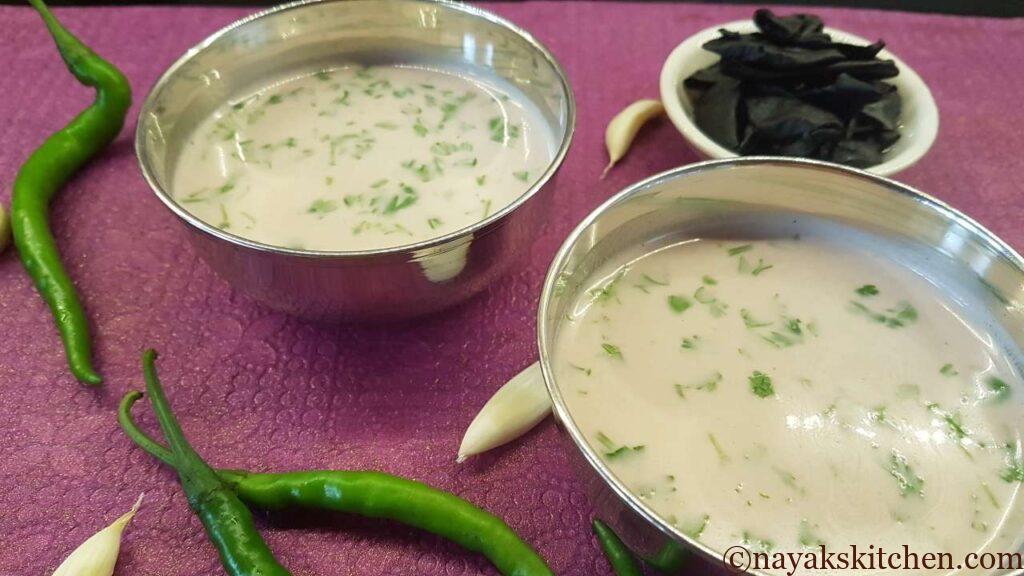
What is Solkadhi?
Solkadhi is a traditional, digestive and cooling drink made using coconut and dried kokum (also known as amsol or amsul; its scientific name is Garcinia Indica). You can also prepare solkadi with kokum syrup (agal). Check out the recipe notes below for more details.
Dried kokum and kokum agal are available in most of the local markets of Goa and the Konkan belt.
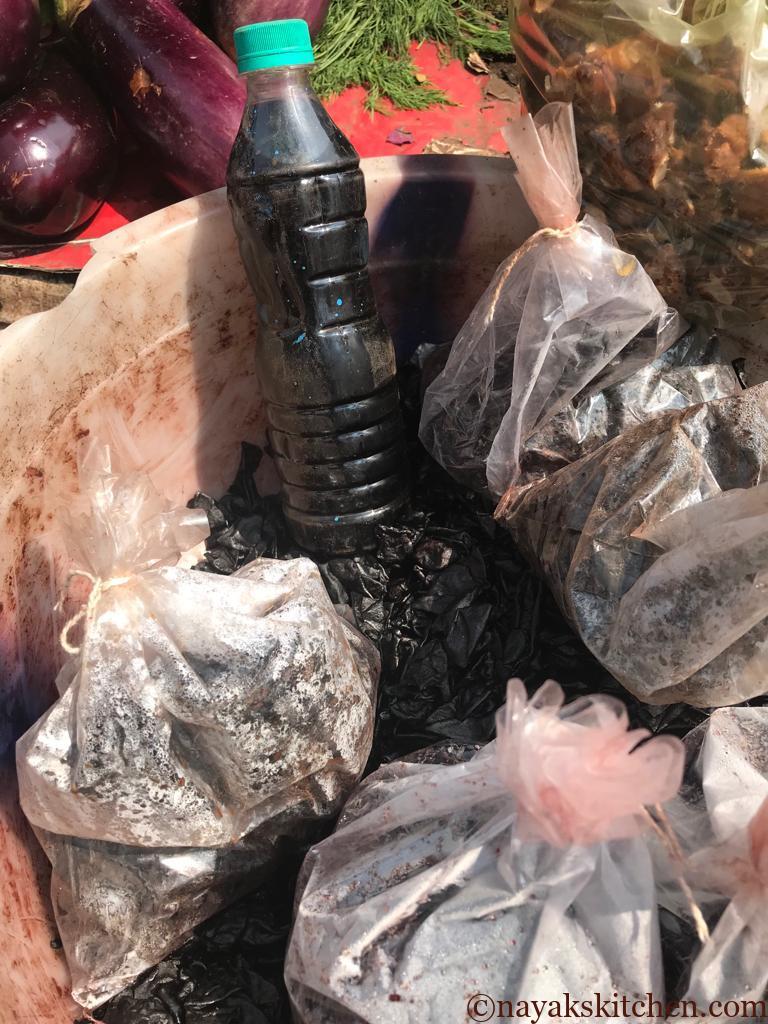
Solkadi drink is usually served at the end of a meal. Since it aids in digestion especially in heavy spicy meals.
The light pink colour imparted by kokum makes it look tempting. This sour, tart, mildly pungent, sweet vegan kadhi truly completes your meal. Also, it is an excellent beverage for the summer. Kokum solkadhi can be prepared in 15-20 mins.
What is Kokum?

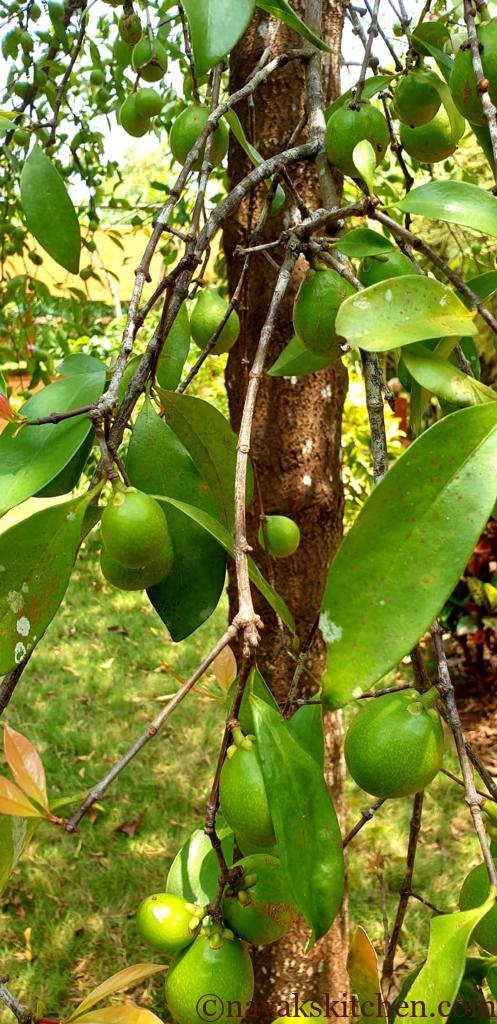
Kokum is an indigenous fruit, primarily, grown in the Western Ghats especially Goa and the Konkan belt. It is a small fruit similar to a cherry tomato.
The rinds of this fruit are sun-dried and have many culinary uses. Kokum has a tart and sour taste. Hence, it acts as a souring agent since it renders a distinct flavour to delicacies. It is undoubtedly the culinary jewel of the coastal cuisine.
It is easy to find kokum along the coastal areas. Also it is available online too.
To know more about the kokum fruit, its characteristics, uses and benefits do check out the post below.
Kokum – An indigenous native fruit
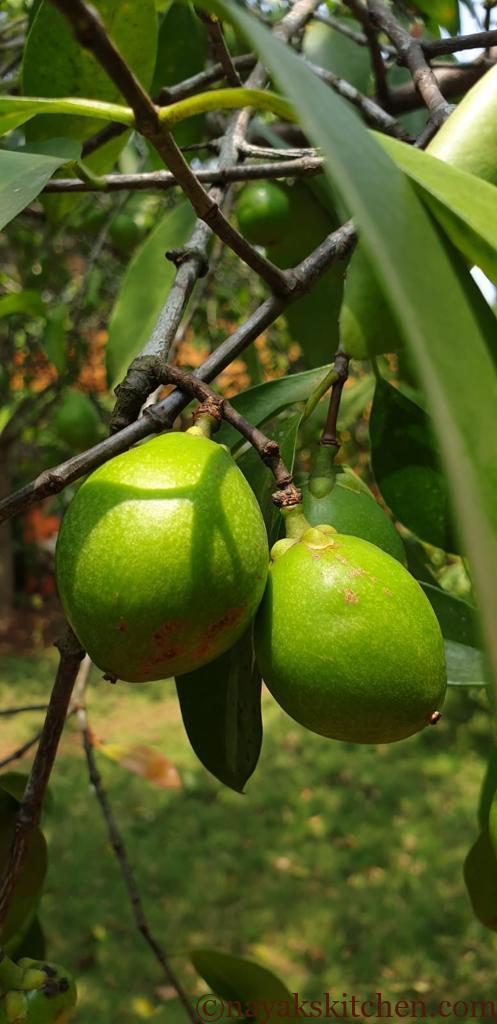
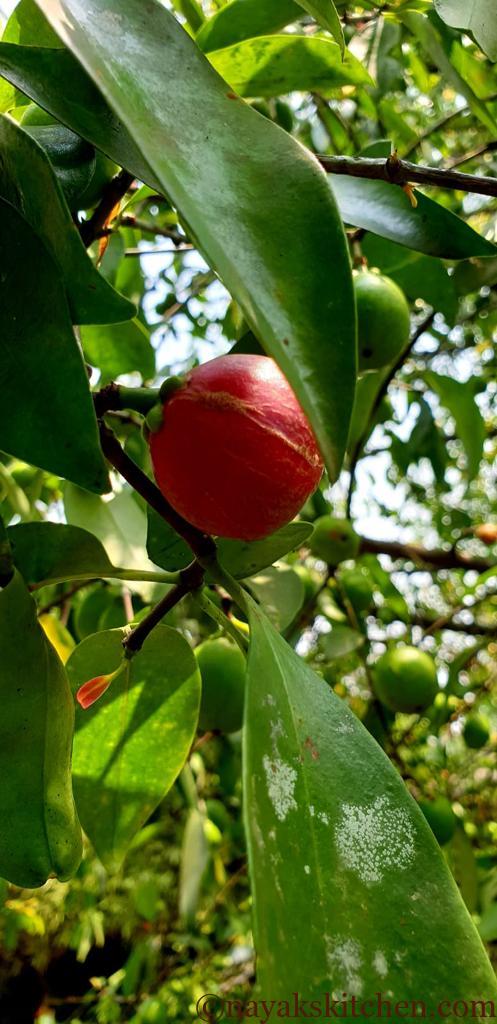
About Solkadi
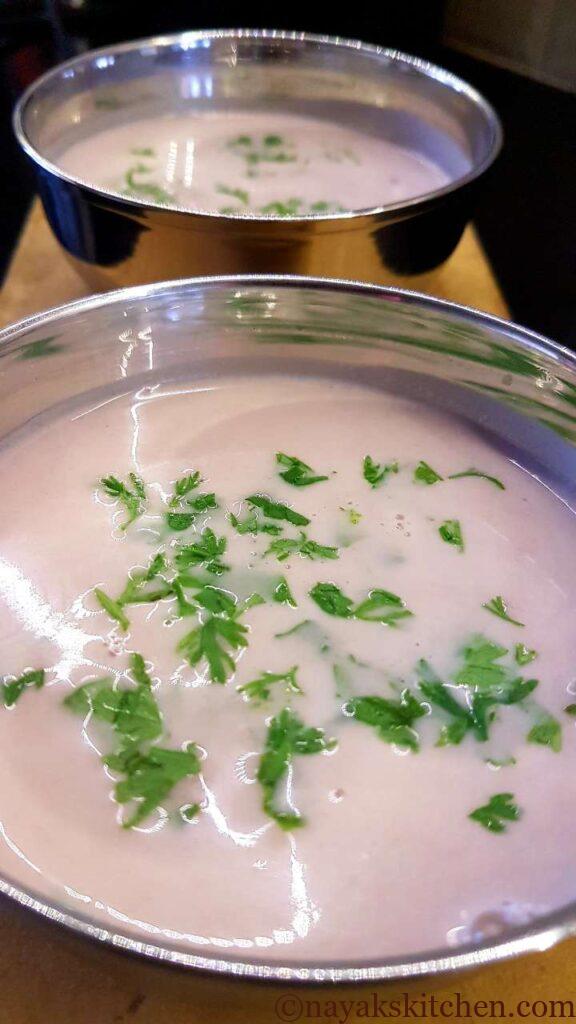
There are 2 types of Kadhis:-
- Futi Kadhi – Also known as ‘Tival’. This is prepared without coconut milk. Hence, mostly used as a drink post a meal.
- Solkadhi – Sometimes also referred to as ‘Dhavi Kadhi’. Dhavi Kadhi means ‘white curry‘ since coconut milk is used in it.
There are many variations of this kokum Solkadhi recipe. This is a Konkani style solkadhi. It also differs from region to region.
Solkadhi Ingredients
Solkadi recipe ingredients include the following:-
- Coconut – Preferably use fresh coconut for Solkadi. Check the tips section below for details.
- Dried Kokum – Indeed it is the star ingredient in the Solkadhi recipe. You can also use Kokum Agal (kokum extract) in the recipe. The tartness of kokum lends a delectable taste.
- Garlic – This version of Solkadhi uses garlic.
- Asafoetida/Hing – Adding hing or asafoetida helps curb flatulence and aids digestion.
- Other ingredients – Green chilli, sugar, green coriander etc.
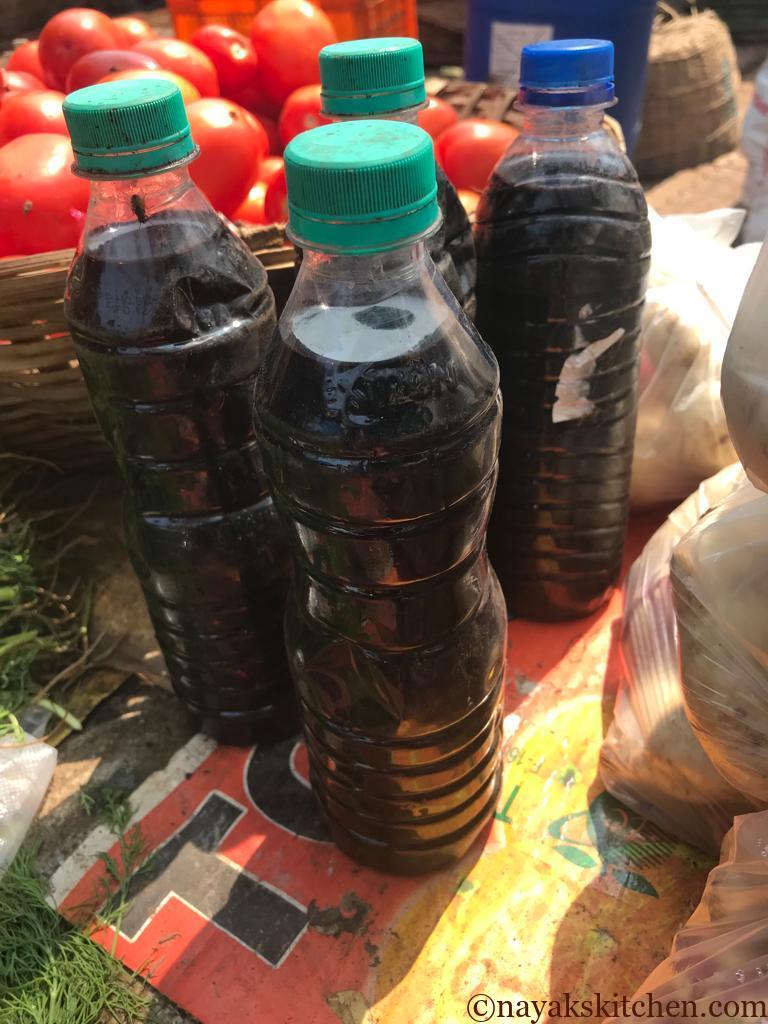
Health Benefits of Solkadhi
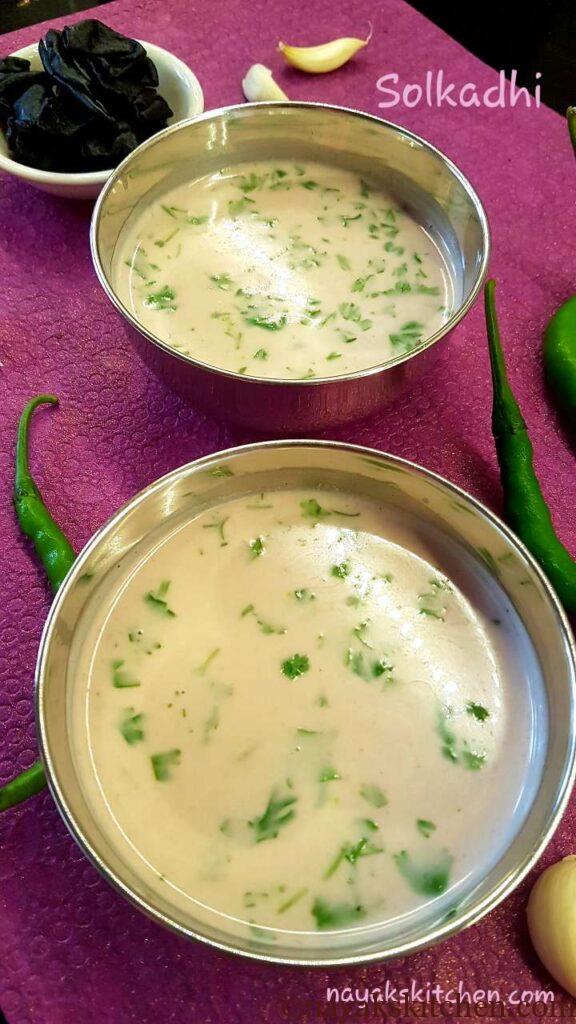
Goan kokum curry or the Solkadhi drink benefits are many. A natural antacid, did you know Kokum has many uses including therapeutic applications? It is now thus slowly finding a global market with its variety of applications. Thus drinking sol kadi has many health benefits.
- Digestion – Kokum relieves indigestion, constipation and flatulence. Due to its anti-flatulent properties, having a kokum solkadhi post a meal is very beneficial.
- Acidity – Due to its cooling properties it is a great remedy for acidity.
- Weight Loss – Kokum prevents the conversion of carbohydrates to fats. It contains a compound called HCA (Hydroxy Citric Acid) that helps burn excess fat through oxidation. Thus solkadhi, improves satiety after meals. Hence, you may have observed most of the cultures finish off their meals with a Kokum drink (i.e.; sol kadhi).
- Gut Health – Kokum in solkadhi protects the diverse gut flora and thus benefits gut health.
Serving Suggestions
Serve solkadhi with traditional veg or non-veg thali. On days you feel like having a light meal serve it with plain rice and some batat fodi (crispy pan-fried potatoes) or brinjal rava fry.
Few Tips
- Use freshly grated coconut if available. Nevertheless, if you are using frozen coconut, thaw it well to room temperature.
- Always use drinking water to prepare solkadi as there is no cooking involved in the process.
- Extract thick coconut milk for a good solkadhi. Preferably use the first extract. You can then add very little water to extract any remaining juice. However, do not add too much water. Solkadhi should have a thick consistency.
- Solkadhi has a short shelf life since it is not cooked. You cannot refrigerate it. All the fat in the coconut milk will rise to the top. Also, it does not taste great once refrigerated.
- It goes bad after a few hours depending on the climate. So consume immediately within 1-2 hours.
- The colour of solkadhi depends on the quality of kokum used. A fresh batch of dried kokum will give you a bright pink colour. Whereas aged or old kokum will give you a not-so-bright but dull colour.
- You can also use agal (Kokum fruit extract) instead of kokum rinds. Add about 2-3 tbsp to the extracted coconut milk.
- Finally, if you want to prepare instant solkadi use readymade coconut milk and mix kokum extract (agal) or kokum rinds in it. To this mixture add crushed garlic, green chillies, hing, salt and sugar. However, for an authentic taste and flavour follow the recipe.
How to make Solkadi? (Recipe of solkadhi)
- Get all the solkadhi ingredients ready. Soak 4-5 pieces of kokum in 1/4th cup of water for 15-20 mins.
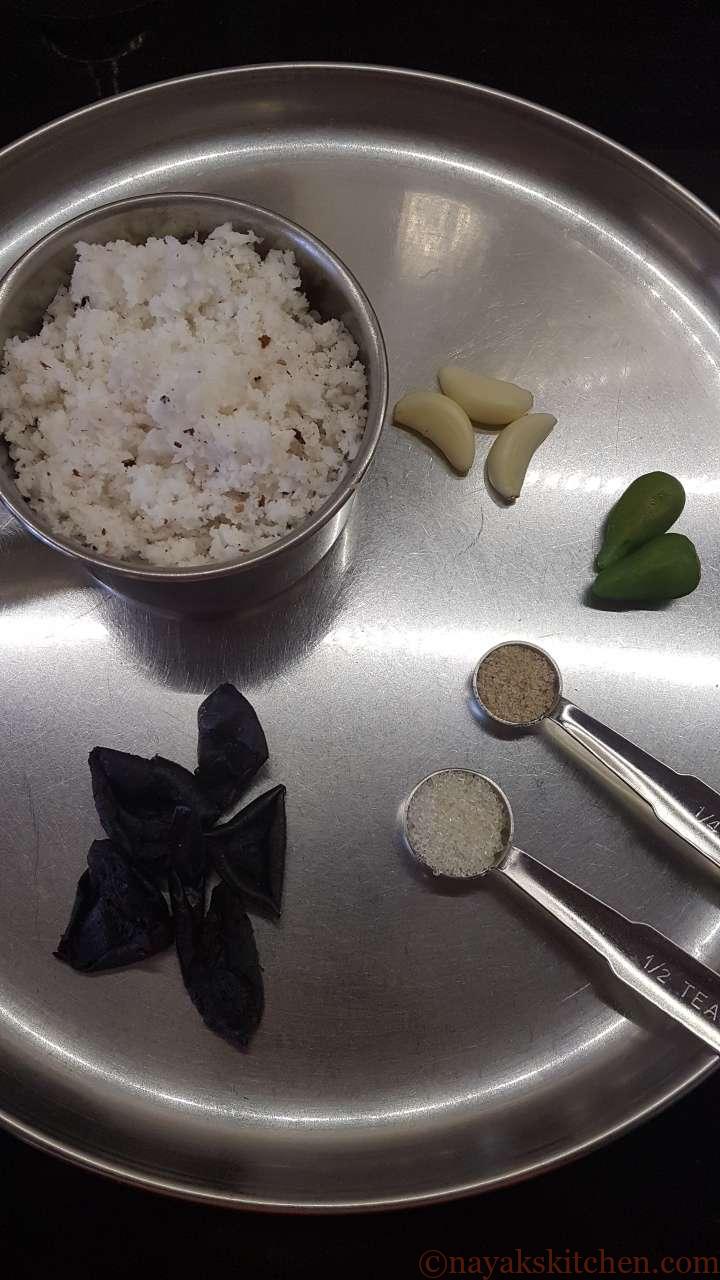

2. The kokum will release its extract as shown in the pic below. Take grated coconut, green chillies, garlic and asafoetida (hing) in a mixie jar. Add 1/2 cup water.
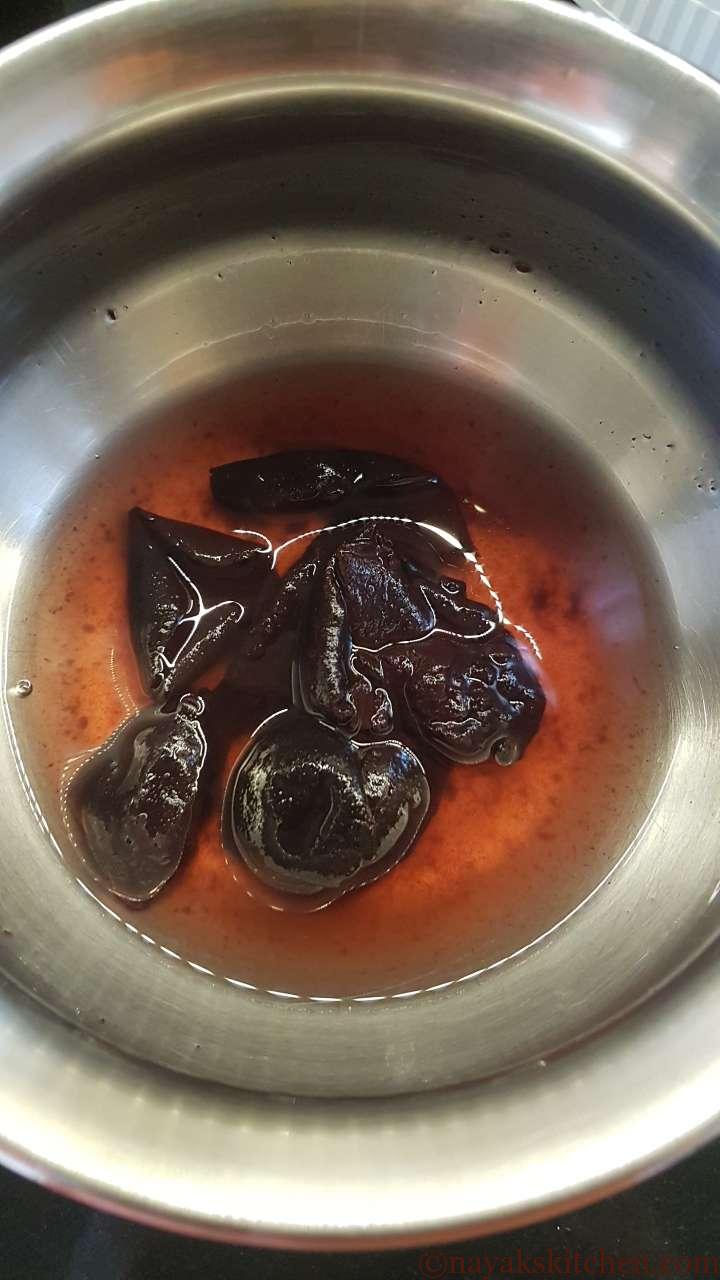

3. Grind the ingredients to a smooth paste. Add 1/2 cup water again to the paste and extract thick coconut milk.

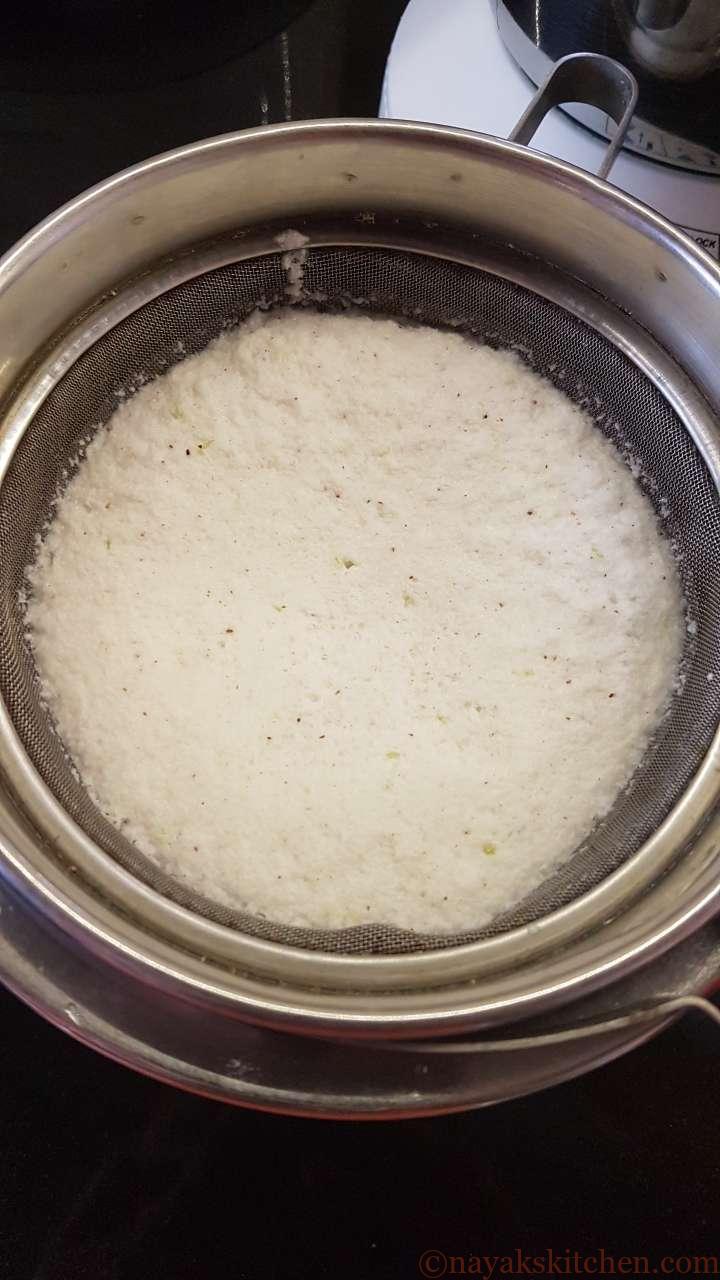
4. After extracting thick milk, you can add a little more water (just enough to soak the coconut residue about 1/4 cup or so) and extract more milk. However, do not add too much water. Solkadi of thick consistency tastes best.
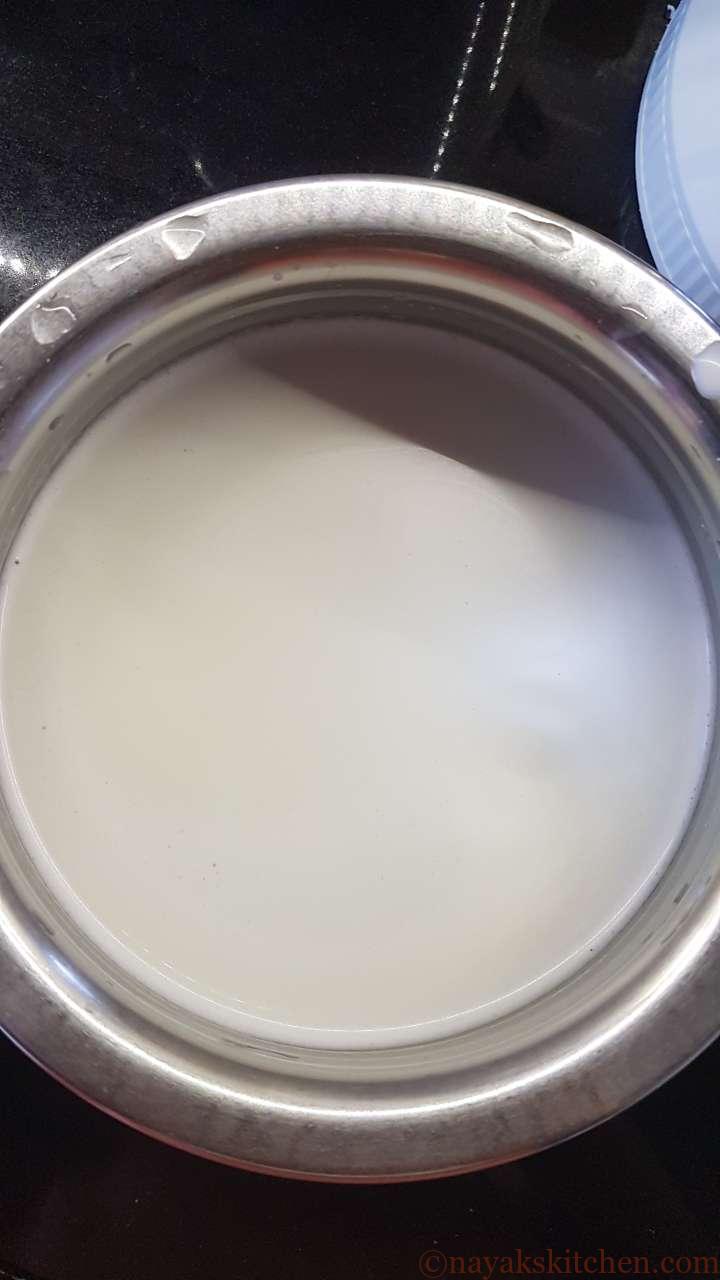
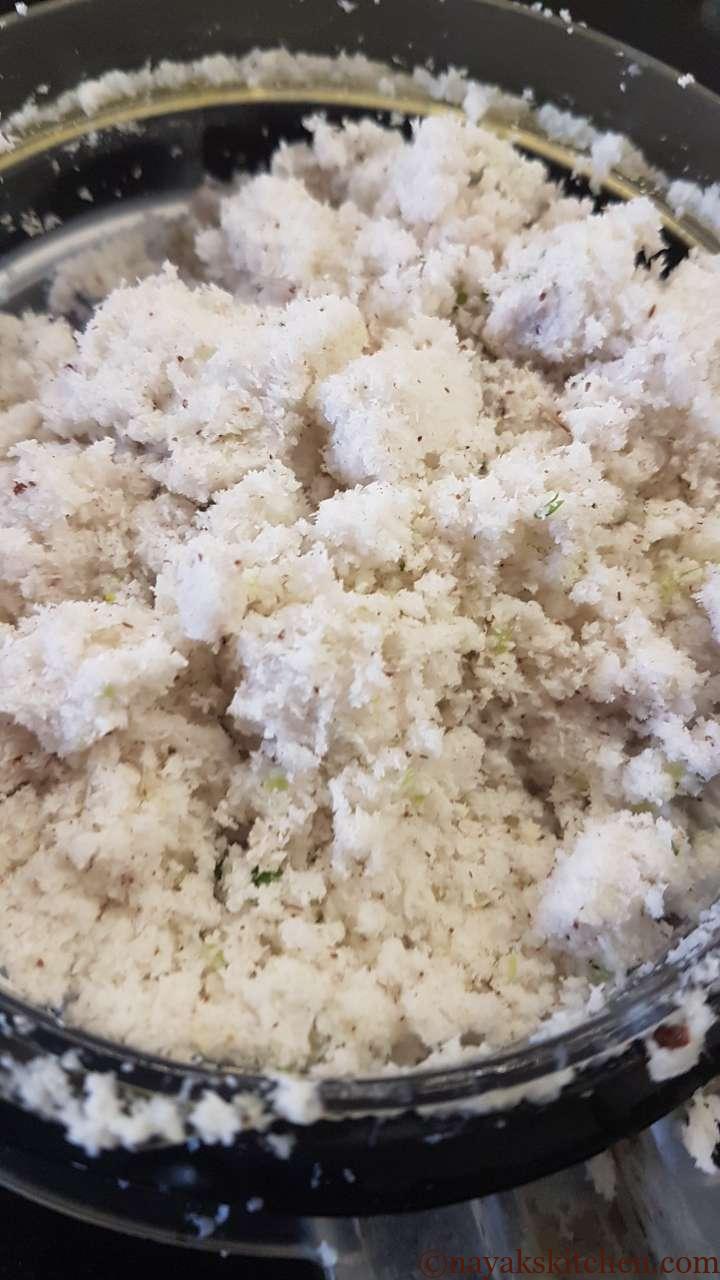
5. Next, add the soaked kokum along with the water. Stir the solkadhi well. (Note: You can add 2-3 tbsp of kokum extract instead of kokum rinds.)
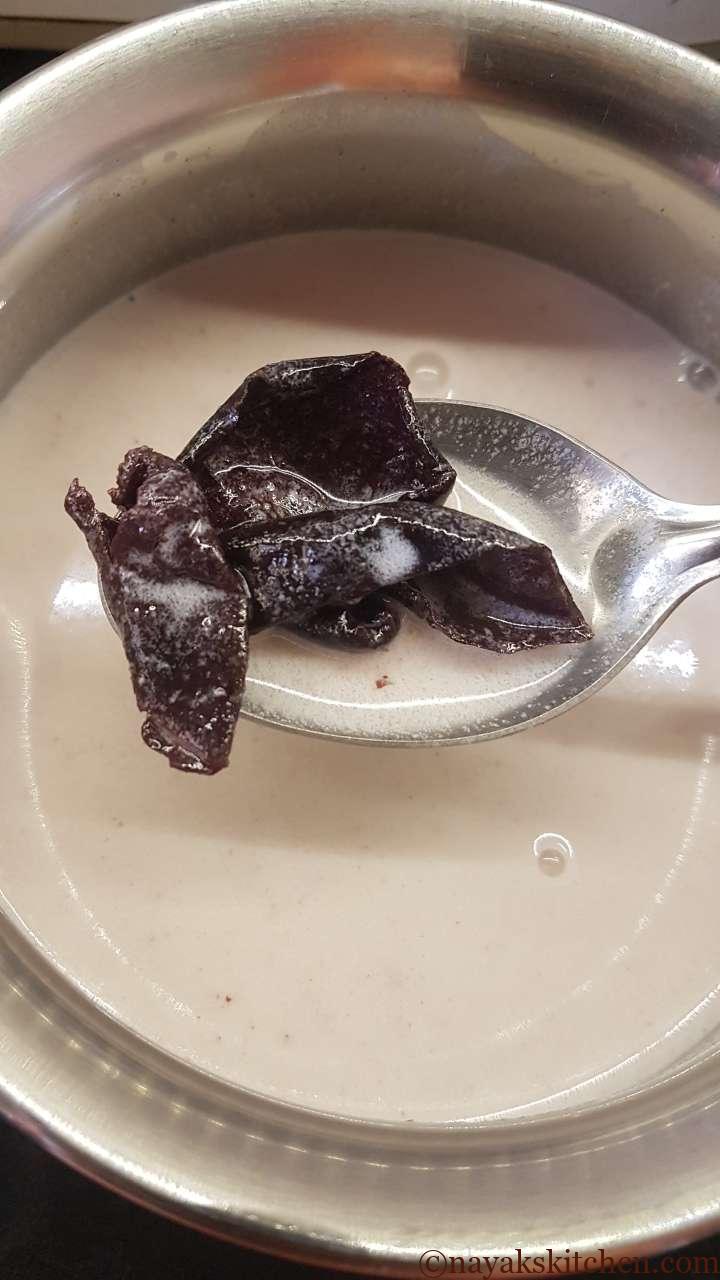
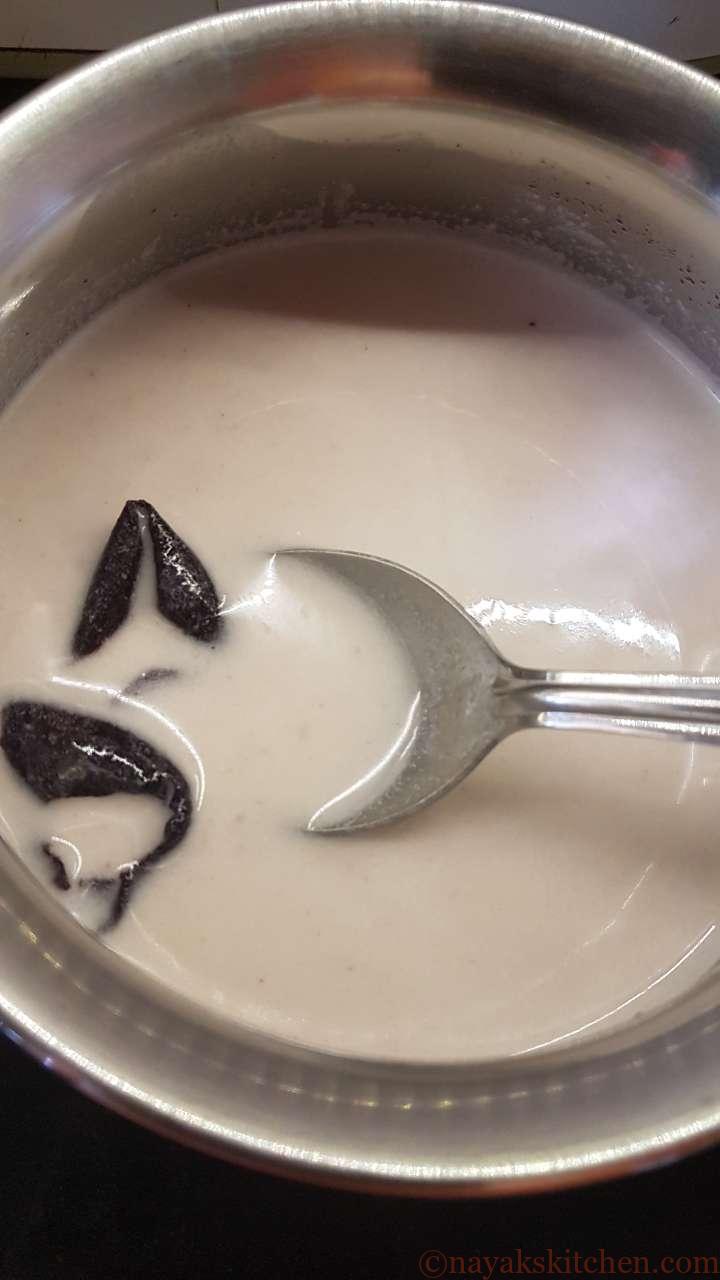
6. Finally add salt and sugar and give a good mix.
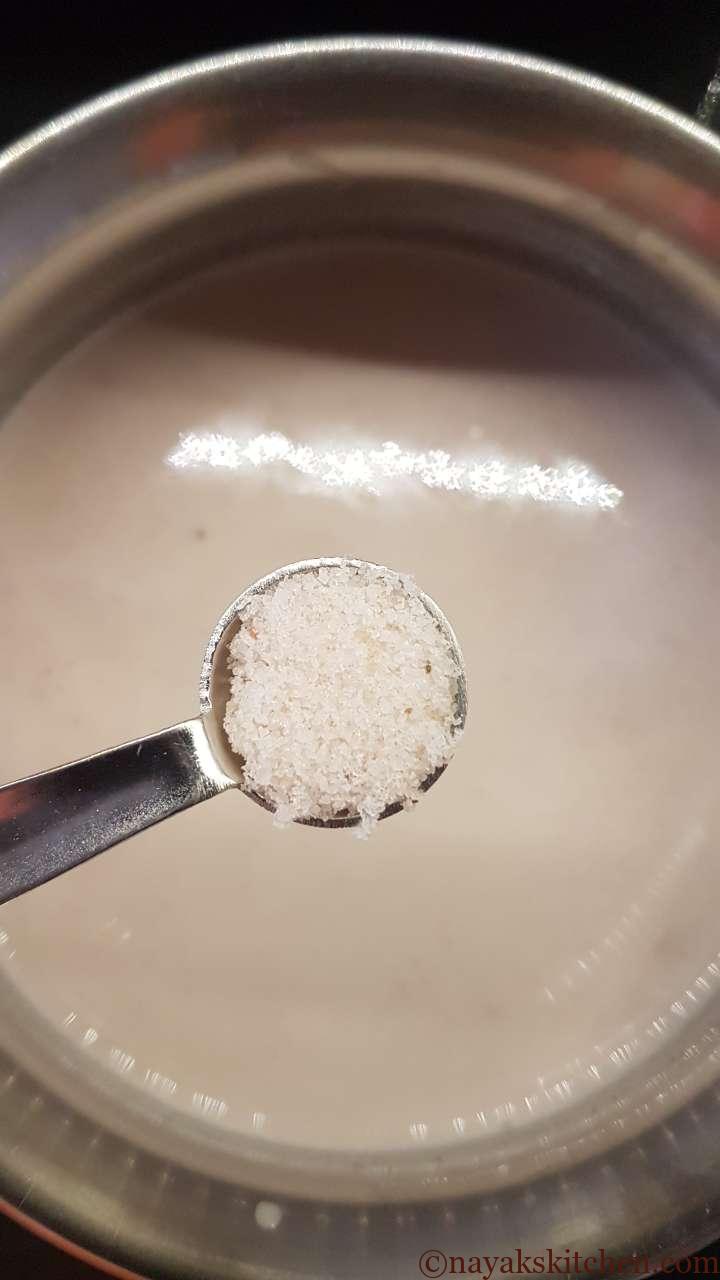
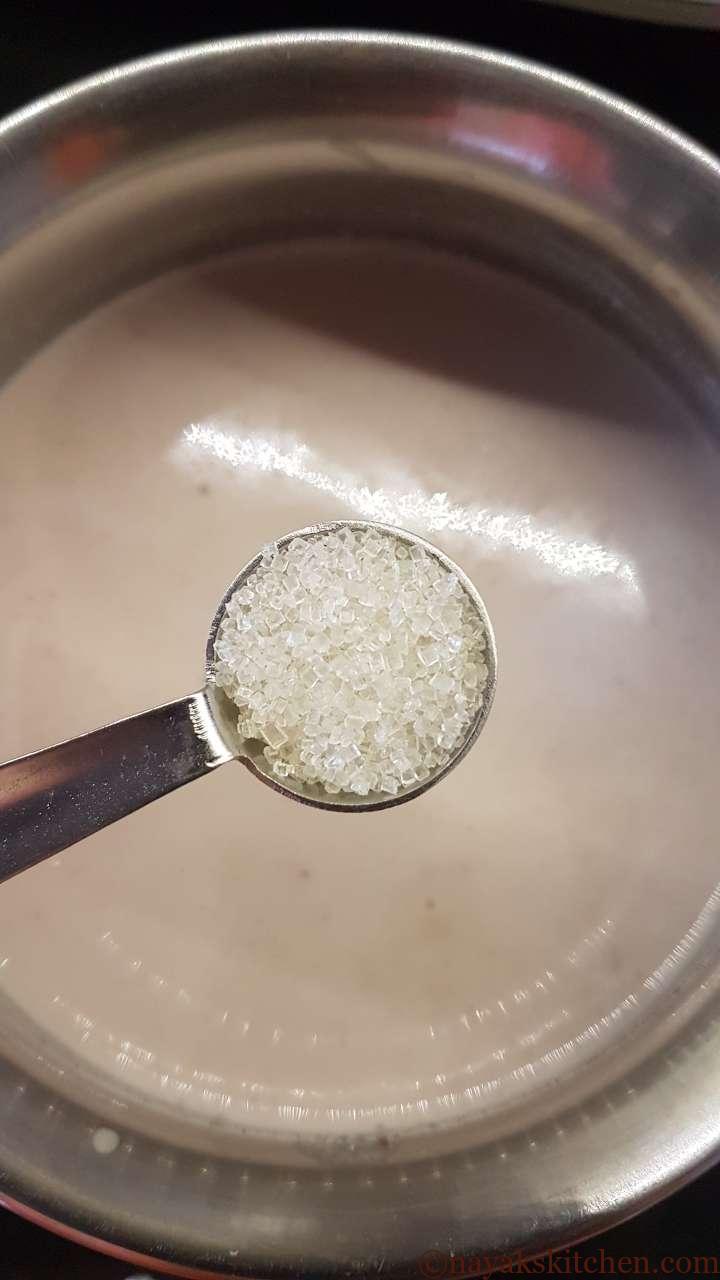
7. Strain the solkadhi and remove the kokum after some time. This is to avoid it from further becoming more sour or tart. You can add chopped coriander leaves. (This is optional.)
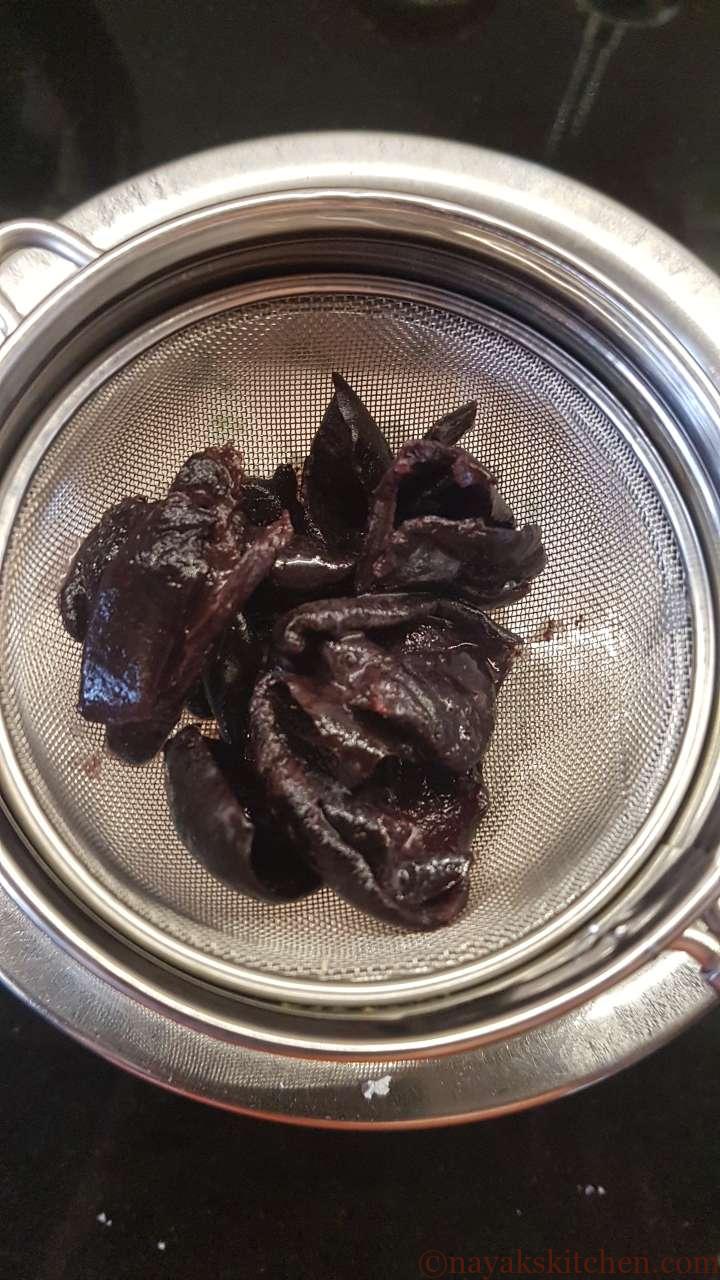

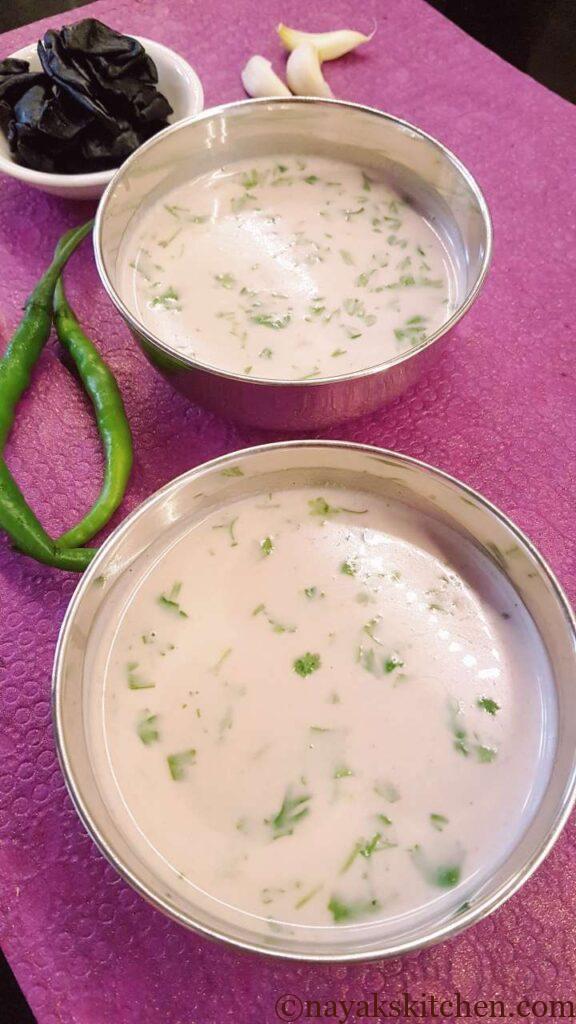
Solkadhi (with coconut milk) | Kokum Curry | How to make Goan Solkadhi?
Course: BeveragesCuisine: GoanDifficulty: Easy4
people5
minutes15
minutes20
minutesSolkadhi is a traditional, digestive and cooling drink made using coconut and dried kokum usually served at the end of a meal.
Ingredients
1 cup = 250 ml
1 tbsp = 15 ml
1 tsp = 5 ml
Grated Coconut – 1 cup (heaped)
Kokum – 4-5 nos.
Green chillies – 2 nos. (small)
Garlic – 3-4 nos.
Asafoetida (Hing) – 1/4 tsp
Salt – 1/4 tsp or as per taste
Sugar – 1/2 tsp
Green coriander (optional) – 1 tsp
- Water measures
1/4 cup – For soaking kokum
1/2 cup – While grinding
1/2 cup – To extract thick milk
1/4 cup – To extract milk second time
Directions
- Get all the solkadhi ingredients ready. Soak 4-5 pieces of kokum in 1/4th cup of water for 15-20 mins.
- The kokum will start to release its extract. Take grated coconut, green chillies, garlic and asafoetida (hing) in a mixie jar. Add 1/2 cup of water to it.
- Grind the ingredients to a smooth paste. Add 1/2 cup water again to the paste and extract thick coconut milk.
- You can add a little more water (just enough to soak the coconut residue about 1/4 cup or so) and extract more milk. However, do not add too much water. Solkadi of thick consistency tastes best.
- Next, add the soaked kokum along with the water. Stir the solkadhi well. (Note: You can add 2-3 tbsp of kokum extract instead of kokum rinds.)
- Finally add salt and sugar and give a good mix.
- Strain the solkadhi to remove the kokum, after some time. This is to avoid it from further becoming more sour or tart. You can add chopped coriander leaves. (This is optional.)
Notes
- Use freshly grated coconut if available. Nevertheless, if you are using frozen coconut, thaw it well to room temperature.
- Extract thick coconut milk for a good solkadhi. Preferably use the first extract. You can then add very little water to extract any remaining juice. However, do not add too much water. Solkadhi should have a thick consistency.
- Solkadhi has a short shelf life since it is not cooked. You cannot refrigerate it. All the fat in the coconut milk will rise to the top. Also, it does not taste great once refrigerated.
- It goes bad after a few hours depending on the climate. So consume immediately within 1-2 hours.
- The colour of solkadhi depends on the quality of kokum used. A fresh batch of dried kokum will give you a bright pink colour. Whereas aged or old kokum will give you a not-so-bright but dull colour.
- You can also use agal (Kokum fruit extract) instead of kokum rinds. Add about 2-3 tbsp to the extracted coconut milk.
- If you want to prepare instant solkadi use readymade coconut milk and mix kokum extract (agal) or kokum rinds in it. To this mixture add crushed garlic, green chillies, hing, salt and sugar. However for an authentic taste and flavour follow the recipe.
- This recipe can be doubled or tripled.




